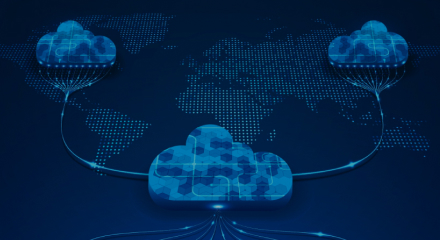Best AWS cloud migration strategy
Recent advancements in cloud storage have been substantial. Thales reports that utilisation will increase from 30% in 2015 to 60% by 2022. This enables various strategies for migrating to AWS cloud, tailored to the specific requirements and characteristics of different applications. When considering cloud migration, organisations often reference the seven key AWS cloud migration steps, known as the 7Rs.
Rehost (Lift and Shift)
Rehosting, or the 'lift-and-shift' approach, moves applications to AWS and runs them with minimal code modification. While this approach is relatively fast and inexpensive, particularly for the old systems, it lacks several benefits. Thus, there are tools such as CloudEndure Migration and AWS VM Import/Export to enable automated rehosting.
Relocate
Switching applications to a different cloud platform may be required to take advantage of AWS's unique features or when establishing a multi-cloud approach. This strategy is helpful because it helps organisations leverage AWS services and makes the architecture work with other cloud providers.
Replatform
Replatforming only makes minor adjustments to applications during migration. It also heavily uses cloud-native capabilities by allowing fine-tuning of operations with minimal change to the code. It is designed to find an optimal solution between speed and efficiency.
Refactor
Refactoring is about optimising portions of an application and product to exploit cloud services completely. This is generally faster and can lead to improved performance, scalability, and cost optimisation, which is ideal for long-term benefits considering some code changes.
Repurchase
Customisation is sometimes easier than repurchasing, although developing new software is sometimes less efficient than modifying the pre-existing components. This involves replacing existing software with a more cloud-friendly application configured for cloud systems and may prove to be a better investment in performance and maintenance. The pricing assessment in this strategy entails comparing AWS services or third-party products that meet your needs.
Retire
Retirement means finding and isolating outdated applications that are no longer relevant or useful. This strategy simplifies organisational work and lowers expenses; it is advisable to periodically review your portfolio and deselect tasks that burden the organisation.
Retaining
Thus, hosting them in the local environment or a hybrid model may be more advantageous for such a workload. It enables organisations to hold on to things in the same state for particular usages. For instance, in retention matters, many organisations wish to keep things as they are due to some uses.
Activity guides for AWS migration
AWS migration entails utilising the cloud to relocate data from other on-premise structures, different cloud providers, or a mixture of AWS and cloud structures. This process is generally broken down into three main phases:
Preparation phase of AWS cloud migration
- Assessment and Planning: To provide this necessary context, carefully evaluate your current IT landscape. This ensures an understanding of the workloads and dependencies that indicate the varying performance requirements for different machines on the network.
- Migration Readiness Assessment: AWS offers a Migration Readiness Assessment (MRA) – an assessment tool that checks your organisation in 6 critical dimensions of business: people, process, platform, operation, and security. In this process, one can note certain areas that require enhancement before an overall migration process.
- Designing the Migration Strategy: The decision on the best migration approach for each workload depends on its type. AWS outlines seven common strategies, known as the 7 R's: Lift-shift, Replatform, Refactor, Rebuy, Retirement, Retaining and Rehost. Choose the approach that reflects your business objectives and meets all technical needs.
Migration phase of AWS cloud migration
- Setting Up the AWS Environment: Create and keep your tools at AWS Accounts and build a secure environment on AWS to follow compliance standards. Used AWS Organisations for managing multiple AWS accounts, IAM for security and access management within the accounts, and the VPC for defining the network.
- Data Migration: In light of this, selecting an appropriate data migration service is very important, depending on the volume and data type. Here is a list of AWS services to migrate and transfer data: AWS Database Migration Service (DMS), AWS Snowball, and AWS DataSync.
- Application Migration: Address applications from one location to another with AWS SMS or AWS MGN. It is possible to run the applications in the AWS environment to ensure that they are correctly working and running in the AWS environment.
- Cutover and Validation: When you are done migrating data and applications, complete the migration by switching to the AWS environment. Confirm that all the services and applications needed to be deployed are running as required. Use CloudWatch for Stats and CloudTrail Services for continuous monitoring and logging operations.
Post-migration phase of AWS cloud migration
- Optimisation and Modernisation: After application migration to AWS cloud, continue tweaking the environment to produce optimal outcomes for both performance and cost and ensure it is secured. AWS's trusted advisor can provide recommendations on how to enhance the AWS setup.
- Training and Adoption: Ensure your IT staff are well informed about the AWS services available and how to apply optimal practices. AWS offers numerous references for learning through the basis of its Training and Certification programs for enhancing the teams' know-how.
- Governance and Compliance: Set governance policies and compliance checks, which will helo monitor and control the use of AWS. AWS Config and AWS Organisations keep track of configuration changes and help manage governance and compliance.
Primary factors to consider when performing AWS migration
- Security: Employ a robust security approach using security services, including AWS Shield, AWS KMS, and AWS WAF. Implement measures to encrypt information in transit and when stored in other systems and devices.
- Cost Management: AWS Cost Management tools that enable the monitoring of finances and the regulation of spending in all regions. Always configure AWS Budgets and utilise Reserved Instances (RIs) or Savings Plans for optimal cost reduction.
- Performance: Several AWS services provide built-in monitoring through AWS CloudWatch, while AWS X-Ray is a tool for mapping and analysing the behaviour of your applications and workloads. Various resources should be scaled with the help of AWS Auto Scaling to match the load.
Now, enterprises continue to complete the digital transformation with a multi-cloud model. Businesses look for the right collaborators and support that help and dictate them regarding digital transformation in cloud, network, and security. Through its multi-cloud solutions, Tata Communications is a managed service partner specialising in digital transformations, cloud adoption strategies, and large-scale migration with modernisation.



